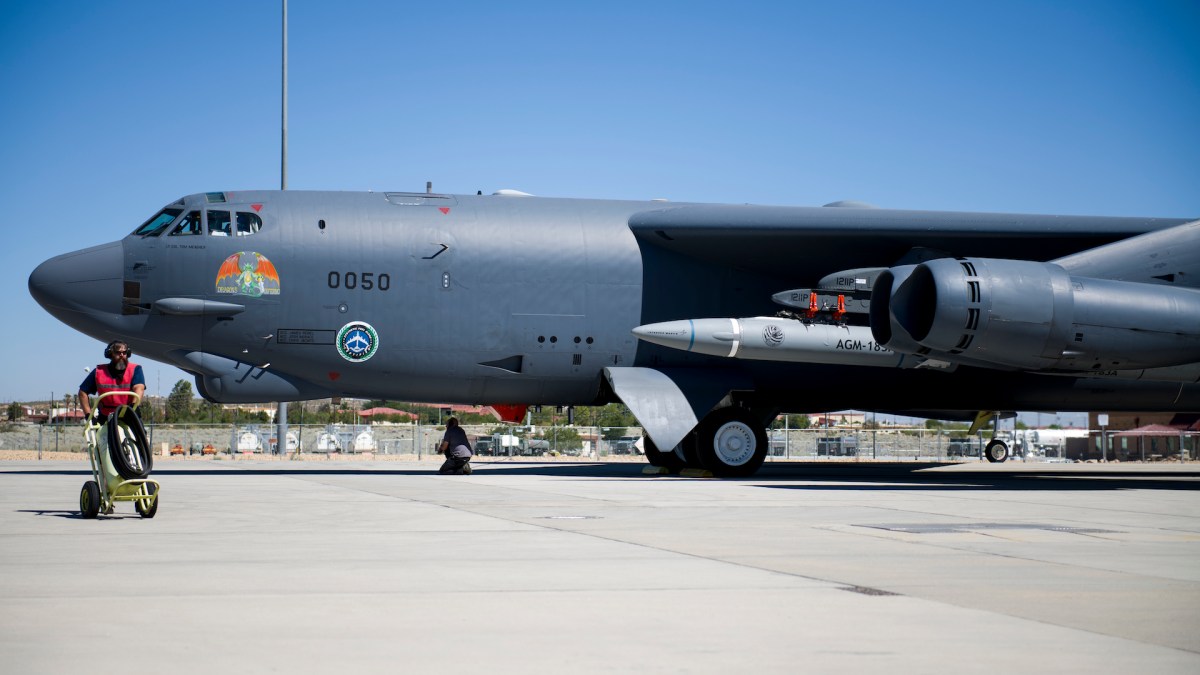LaPlante hints at plan to continue Air Force’s boost-glide hypersonic missile efforts

The Pentagon’s top weapons buyer suggested to lawmakers that work related to the Air Force’s Air-Launched Rapid Response Weapon (ARRW) project will move forward in some fashion beyond this fiscal year despite budget uncertainty and hiccups with testing.
Undersecretary of Defense for Acquisition and Sustainment William LaPlante hinted at follow-on efforts during an exchange with Rep. Jim Banks, R-Ind., at a House Armed Services Committee hearing Thursday regarding Defense Department initiatives to expedite the fielding of innovative technologies.
“The Air Force’s ARRW system is the only hypersonic weapon that the DOD has successfully tested so far. And yet the DOD currently has no plans to move the program forward. Why is that?” Banks asked.
“Let’s just say that there is a plan. It’s not something we can talk about in this open session. But we’d like to talk. We’d be happy to come over and brief you in a SCIF [sensitive compartmented information facility where classified information can be viewed and discussed],” LaPlante replied.
Additional funding for ARRW would breathe fresh life into a project that many thought would be coming to an end. The service’s fiscal 2024 budget request included about $150 million for research, development, test and evaluation for the system, but the documents suggested it would wrap up after that.
It’s unclear, based on LaPlante’s comments, if follow-on work for boost-glide systems would fall under the ARRW program or a new program with a different name.
Last year, after a test that was deemed unsuccessful, Air Force Secretary Frank Kendall said the service was more committed to a different weapon known as the Hypersonic Attack Cruise Missile (HACM) — an air-breathing system that will use a scramjet engine for propulsion.
ARRW, developed by Lockheed Martin, is a boost-glide missile that uses a rocket motor to reach hypersonic speeds. The Air Force has launched the weapon from a B-52 bomber during testing.
The service had two ARRW tests slated for fiscal 2024, and one of them was conducted in October.
Hypersonic missiles are designed to fly faster than Mach 5, be highly maneuverable and have unpredictable flight paths, which would make it difficult for traditional air defense systems to intercept them. They are a top modernization priority for the Pentagon. The Air Force, Army and Navy are all pursuing different variants.
In December, Assistant Secretary of the Air Force for Acquisition, Technology and Logistics Andrew Hunter told DefenseScoop that the service hadn’t closed the door on further pursuit of boost-glide weapons.
“There are different approaches to delivering hypersonic capability. And we have not ruled out any of those approaches for the Air Force in the future,” he said in an interview.
However, Hunter didn’t disclose whether additional funding will be included for ARRW or follow-on work in the next budget submission.
“The rapid prototyping program is continuing [in fiscal 2024]. It’s been accomplishing flight tests, which has definitely been adding to our capabilities in the hypersonic realm. It adds to our understanding of … the capabilities that industry can provide, as it has provided under ARRW. And also adds to our ability to do test of hypersonic capabilities, which is really actually quite a key thing because the nature of hypersonic systems is they create a demand signal for a lot of new test capabilities, which we’ve been able to demonstrate with ARRW. And there will be more testing on ARRW in ’24,” he said.
More information about the fate of the program and other advanced weapons will be revealed when the service releases its fiscal 2025 budget request in the coming weeks.
“We don’t have anything additional to provide at this time,” an Air Force spokesperson told DefenseScoop Thursday in response to questions about LaPlante’s comments and future plans for ARRW.



